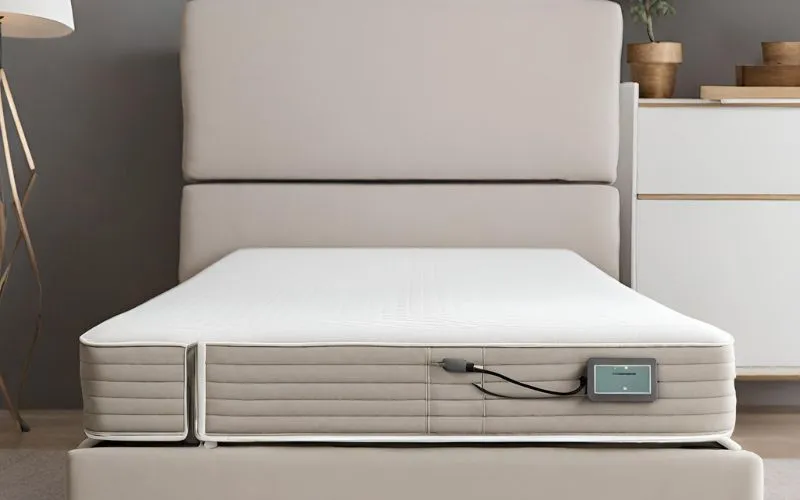Adjustable Bed Electrical Troubleshooting: A Step-by-Step Guide

Introduction
Adjustable beds are a popular choice for individuals seeking customized comfort and support for a good night’s sleep. These innovative pieces of furniture offer a range of adjustable positions to accommodate various sleep preferences and provide relief for specific health conditions. However, like any electrical appliance, adjustable beds may encounter issues related to their electrical systems, such as malfunctioning motors, wiring problems, or remote control malfunctions. In this comprehensive guide, we will delve into the common electrical issues associated with adjustable beds, offer a step-by-step troubleshooting method, and provide insights into seeking professional assistance when necessary.
Understanding Adjustable Beds and Electrical Systems
What is an Adjustable Bed?
An adjustable bed, also known as a reclining or hospital bed, is a type of bed that offers multiple reclining positions and allows the user to adjust the angle of the head and feet to their preference. These beds are often equipped with motors and a remote control to facilitate the adjustments, providing enhanced comfort and support.
- Improved Sleep Quality: By elevating the upper body and legs, adjustable beds can alleviate discomfort and promote better sleep.
- Reduction of Snoring: Elevating the upper body can help reduce snoring and improve breathing during sleep.
- Enhanced Comfort: The ability to customize the position of the bed offers personalized comfort for reading, watching TV, or working on a laptop.
- Relief for Health Conditions: Adjustable beds can provide relief for various health issues, such as acid reflux, sleep apnea, and edema.
- Improved Circulation: Elevating the legs can aid in improving blood circulation and reducing swelling.
These beds are not only beneficial for individuals with specific health needs but also for anyone seeking a more comfortable and customizable sleep experience.
How Do Adjustable Beds Work?
Adjustable beds are designed to provide customized comfort and support by allowing users to adjust the angle of the head and foot sections. This functionality is achieved through a system of motors, hinges, and remote controls that enable users to change the positioning of the bed to suit their preferences.
Here are the key components that enable adjustable beds to work:
- Motors: Adjustable beds feature powerful yet quiet motors that drive the movement of the bed’s sections. These motors are capable of smoothly and swiftly adjusting the angle of the head and foot sections, providing users with the flexibility to find the most comfortable position for sleeping, reading, and watching TV.
- Hinges: The hinges used in adjustable beds are built to withstand frequent movement and adjustments. They are engineered to ensure stability and support while accommodating different angles set by the user, contributing to the overall functionality and durability of the bed.
- Remote Controls: Operating an adjustable bed is made convenient through the use of intuitive remote controls. These devices allow users to effortlessly change the positioning of the head and foot sections, as well as access pre-set memory positions for added convenience.
When considering the operation of adjustable beds, it is important to recognize the beneficial impact this technology has on sleep quality, relaxation, and overall comfort. The ability to customize the bed’s positioning can alleviate discomfort, reduce pressure on the body, and promote better circulation, resulting in improved sleep and enhanced wellness.
Overview of Adjustable Bed Electrical Systems
Adjustable beds are equipped with electrical systems that provide various functionalities for users. In this section, we will delve into the key components and functions of the electrical systems integrated into adjustable beds.
The electrical systems in adjustable beds consist of several essential components, each contributing to the overall functionality of the bed:
- Motorized actuators: These are the primary components responsible for adjusting the different sections of the bed, such as the head, foot, and height positions. The actuators are powered by electric motors and controlled through the bed’s control unit.
- Control unit: The control unit serves as the interface between the user and the electrical system. It allows users to adjust the bed’s settings, store personalized positions, and access additional features, such as massage functions and under-bed lighting.
- Wiring and power supply: The wiring and power supply components connect the electrical system to the main power source. High-quality wiring ensures reliable performance and safety.
- Remote control or app integration: Many modern adjustable beds are equipped with remote controls or smartphone apps that enable users to wirelessly adjust the bed’s settings and access advanced features.
The electrical systems in adjustable beds provide a range of functionalities to enhance user comfort and convenience:
- Adjustable positioning: Users can effortlessly adjust the head, foot, and height positions to find the most comfortable sleeping or resting position.
- Massage and vibration settings: Some adjustable beds feature built-in massage functions that allow users to enjoy a soothing massage while lying in bed. Vibration settings offer additional relaxation benefits.
- Under-bed lighting: Integrated lighting components provide ambient illumination under the bed, offering convenience during nighttime movements.
- USB charging ports: Certain adjustable beds are equipped with USB ports for charging electronic devices, ensuring easy access to essential gadgets while in bed.
By understanding the key components and functionalities of adjustable bed electrical systems, users can make informed decisions when selecting the ideal bed to meet their specific needs and preferences.
Common Electrical Issues with Adjustable Beds
Identifying Common Electrical Problems
When it comes to adjustable beds, common electrical problems can arise, causing inconvenience and disruption to sleep routines. Identifying these issues early on can help prevent unexpected disturbances, ensuring a comfortable and uninterrupted rest. Here are some key electrical problems to look out for:
- Malfunctioning remote control: Often, a malfunctioning remote control is the culprit behind unresponsive or erratic bed adjustments. This can occur due to dead batteries, signal interference, or damaged components within the remote. It’s essential to troubleshoot the remote control before delving into other potential issues.
- Power supply interruptions: Inconsistent power supply to the adjustable bed can lead to various operational issues. This may result from faulty power outlets, damaged cords, or disrupted connections. It’s crucial to assess the power source and rectify any irregularities to ensure consistent functionality.
- Noisy motor or actuators: Rattling, grinding, or unusual sounds emitted by the bed’s motor or actuators can indicate underlying electrical malfunctions. These disturbances may stem from motor issues, loose connections, or worn-out components. Identifying and addressing these concerns promptly is essential for maintaining a peaceful sleep environment.
- Unresponsive control unit: A non-responsive control unit can impede the adjustment mechanisms, hindering the bed’s functionality. This can result from wiring problems, circuit board issues, or control module malfunctions. Thorough troubleshooting of the control unit is necessary to pinpoint and resolve the electrical complexities.
By recognizing these common electrical problems, individuals can take proactive measures to mitigate disruptions and ensure optimal performance from their adjustable beds.
Safety Precautions when Troubleshooting
When troubleshooting electrical issues with adjustable beds, it is crucial to prioritize safety to prevent accidents and ensure a smooth diagnostic process. Here are some key safety precautions to follow:
- Always turn off the power supply to the adjustable bed before beginning any troubleshooting or repairs.
- Use insulated tools when working with electrical components to prevent electric shock.
- Wear appropriate personal protective equipment (PPE) such as safety glasses and gloves to protect yourself from electrical hazards.
- Keep the troubleshooting area well-lit and free from any obstructions to work safely and efficiently.
Furthermore, it is essential to have a clear understanding of the bed’s electrical system and components before attempting any troubleshooting. Refer to the bed’s manual or technical documentation for detailed information on the electrical layout and functionalities. By adhering to these safety guidelines and remaining aware of potential hazards, individuals can effectively address electrical issues with adjustable beds while ensuring their well-being.
Tools Required for Troubleshooting
When it comes to troubleshooting electrical issues with adjustable beds, having the right tools is essential for a safe and effective process. Here’s a detailed list of tools required for troubleshooting common electrical problems in adjustable beds:
- Insulated Screwdrivers: These are necessary for working on live electrical components, as they provide protection against electric shocks.
- Wire Stripper: A wire stripper is used to strip the insulation off the wires without damaging the conductor underneath.
- Multimeter: This tool is vital for measuring voltage, current, and resistance in electrical circuits, helping to identify various electrical issues.
- Circuit Tester: An essential tool for checking the presence of electrical current and identifying any faulty connections or components.
- Electrical Tape: Using quality electrical tape is crucial for securing wire connections and providing insulation to prevent electrical hazards.
Step-by-Step Guide to Troubleshooting Adjustable Bed Electrical Problems
Checking Power Supply
- Check the power cable for any visible damage, kinks, or fraying. If any damage is found, replace the power cable with a new one of the appropriate rating.
- Ensure that the power outlet is functioning properly by testing it with another device or using a voltage tester. If the power outlet is faulty, have it repaired or consult a qualified electrician.
- Inspect the power supply unit for any signs of overheating or abnormal noises. If issues are detected, consider consulting the manufacturer or a professional technician.
- Verify the power input settings on the adjustable bed control unit to confirm that it matches the electrical specifications for your location. Incorrect settings can lead to power supply issues.
Testing Remote Control Functions
Remote control functions play a crucial role in the operation and convenience of adjustable beds. Here, we’ll delve deeper into the testing methods and troubleshooting steps for remote control functions to ensure seamless functionality.
- Verify Batteries: One of the initial steps to test remote control functionality is to check the batteries. Ensure that the batteries are properly inserted and have sufficient power.
- Signal Transmission: Test the remote control to verify that it is sending signals to the bed’s control unit. This can be done using an infrared sensor tester or a smartphone camera to see if the infrared light is visible when pressing the remote buttons.
- Functional Buttons: Ensure that all the buttons on the remote control are functioning as intended. Check for any unresponsive buttons or irregular behavior.
- Range Testing: Assess the range of the remote control by operating the adjustable bed from different distances and angles. This helps identify any limitations in the signal transmission.
Inspecting Wiring and Connections
When troubleshooting electrical problems in adjustable beds, inspecting the wiring and connections is a crucial step. The wiring and connections are integral to the functioning of the bed’s electrical components, and any issues in this area can lead to malfunctions or failures.
- Begin by visually examining the wiring harness for any signs of wear, fraying, or damage. Note any areas of concern or potential issues.
- Use a multimeter to test the continuity and resistance of the wiring. This step helps identify any faulty or damaged wiring that may be causing electrical issues.
- Inspect all connectors and terminals for corrosion, loose connections, or signs of overheating. Clean and tighten connections as needed to ensure optimal electrical conductivity.
- Examine the control box and junction points to ensure proper insulation and secure connections. Any exposed or damaged wiring should be addressed promptly to prevent electrical hazards.
- Document the findings of the inspection, including any repairs or maintenance carried out, for future reference and troubleshooting.
Addressing Motor and Mechanism Issues
When troubleshooting adjustable bed electrical problems, addressing motor and mechanism issues is a crucial step. These issues can significantly impact the functionality and comfort of the adjustable bed. It’s important to perform thorough checks and evaluations to identify and resolve any motor or mechanism-related issues.
- Unresponsive motors
- Noisy operation
- Uneven or jerky movement
Addressing motor and mechanism issues involves a systematic approach to diagnosis and resolution. Below are the key steps to effectively address these issues:
- Visual Inspection: Begin by visually inspecting the motor and mechanism components for any signs of damage, wear, or misalignment. Check for loose connections and any obstructions that may be affecting the performance.
- Functional Testing: Test the functionality of the motors and mechanisms to identify any irregularities in their operation. This may involve running the adjustable bed through various positions and settings to observe how the motors and mechanisms respond.
- Electrical Checks: Use a multimeter to measure the electrical output of the motors and mechanisms. This can help identify any electrical issues that may be causing the motor or mechanism problems.
- Lubrication and Maintenance: Regular lubrication and maintenance of the motor and mechanism components are essential for promoting smooth and reliable operation. Ensure that the moving parts are properly lubricated and free from debris that could inhibit their movement.
By addressing motor and mechanism issues promptly and effectively, you can optimize the performance and longevity of the adjustable bed, providing greater comfort and satisfaction for users.
Professional Assistance and When to Seek Help
Signs That a Professional Technician is Needed
When it comes to home maintenance and repair, there are certain signs that indicate the need for professional assistance. Recognizing these signs early can save time, money, and prevent further damage. Below are some common signs that indicate the need for a professional technician:
- Electrical Issues: If you experience frequent power outages, surges, or faulty wiring, it’s crucial to seek the expertise of a professional electrician. Attempting to fix electrical problems without proper knowledge and training can be hazardous.
- Complex Plumbing Problems: While minor plumbing issues can often be addressed with DIY solutions, complex problems such as sewer line clogs, tree root infiltration, and extensive pipe damage require the skills of a professional plumber.
- HVAC System Malfunctions: A malfunctioning heating, ventilation, and air conditioning (HVAC) system can lead to discomfort and compromised indoor air quality. Professional technicians are equipped to diagnose and resolve a wide range of HVAC issues.
- Structural Damage: Cracks in the walls, sagging ceilings, or foundation issues should prompt immediate professional assessment. These issues can be signs of underlying structural problems that require expert analysis and repair.
Choosing a Qualified Electrician or Technician
When it comes to electrical work, it’s crucial to choose a qualified electrician or technician. Here are the essential factors to consider when selecting the right professional for your electrical needs:
- Licensing and Certification: Verify that the electrician is licensed and certified to perform electrical work in your area. This ensures that they have the necessary training and skills to handle the job safely and effectively.
- Experience and Expertise: Look for an electrician with relevant experience in the specific type of electrical work you require. An experienced professional is more likely to deliver high-quality results and handle any unexpected challenges.
- Insurance Coverage: Ensure that the electrician has liability insurance to protect you and your property in case of any accidents or damage during the electrical work.
- References and Reviews: Check for references and read online reviews to gauge the electrician’s reputation and the quality of their work. Positive feedback and satisfied customers are indicators of a reliable and dedicated professional.
- Communication and Professionalism: Choose an electrician who communicates clearly, listens to your concerns, and demonstrates professionalism in their interactions. Effective communication is essential for a successful electrical project.
- Cost and Quotations: Request detailed quotations from multiple electricians and compare the costs along with the services offered. While price is important, it should not be the sole determining factor in your decision.
Conclusion
In conclusion, troubleshooting electrical issues with adjustable beds involves a systematic approach, safety precautions, and a basic understanding of the bed’s electrical system. By identifying common problems, following a structured troubleshooting process, and knowing when to seek professional assistance, users can effectively address electrical issues and ensure optimal performance of their adjustable beds. Regular maintenance and proactive troubleshooting can prolong the lifespan of an adjustable bed and enhance the overall sleeping experience.




